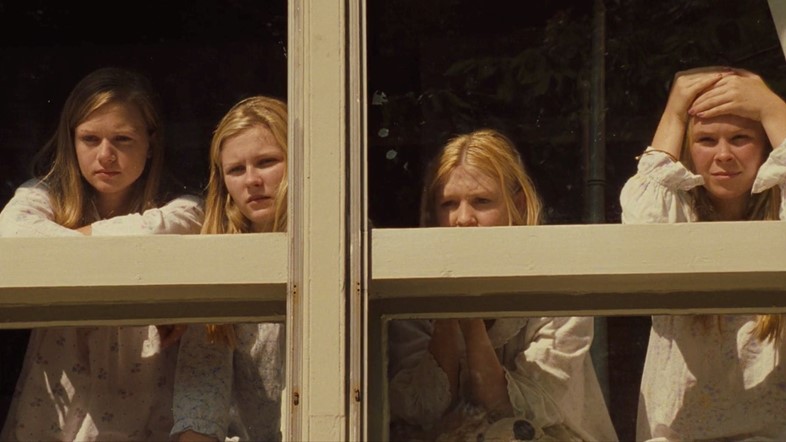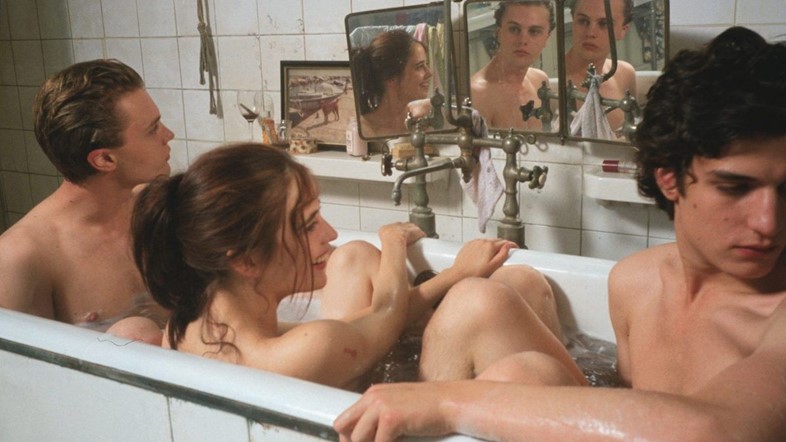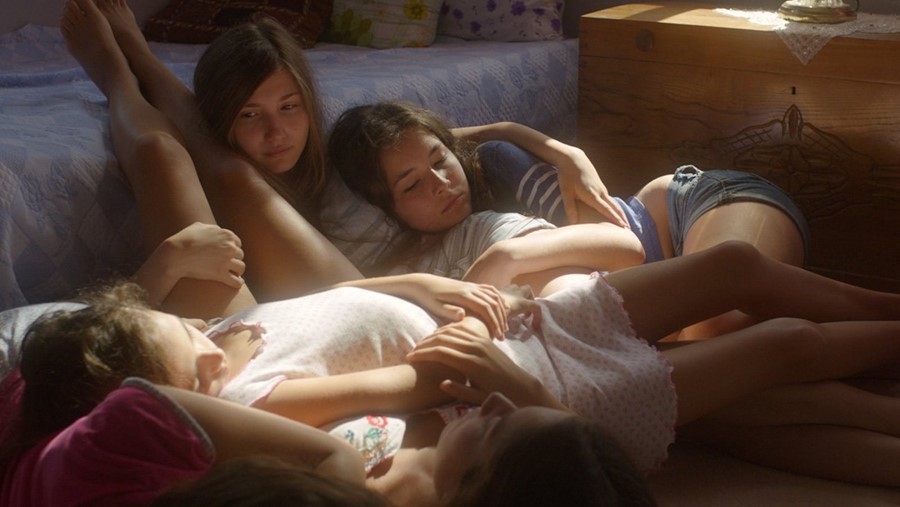From the Virgin Suicides-esque Mustang to Japanese horror Hausu, on-screen adolescents are seasoned experts in being locked away – and the power of finding solace in daydreams
Girlhood Studies: How has visual culture shaped ideas of girlhood? In a new column for AnOthermag.com, Dazed’s editor Claire Marie Healy considers overlooked moments of coming-of-age on screen.
Some words have stuck to this period of self-isolation more than others: a glitch, a shutting-down, a reset. For me, it’s felt more like a regression. Or, another way of putting it – as one friend said recently when planning post-pandemic blowouts from her bedroom – we’re teenagers again. Waiting for our lives to begin.
The reason why the social conditions of a pandemic – primarily, staying in one’s home – might feel like a throwback are both obvious and subtle. When I was a teenager, I dreamed of my adult life, especially the life I would have in my twenties. This future version of me was impeccably-dressed, had a cool job, a large apartment, and was the friend and lover of equally well-dressed men with cool jobs and large apartments (it was always confusing to me why some girls daydreamed of their wedding dress, instead of the coffee table in that apartment in which they would, finally, be truly alone). As far away as that might be from the truth now, adult life does give you the hard-won independence – if not the constant frisson of movie-glamour – that teenage life denied you. In adolescence, your life doesn’t feel entirely your own yet, and the desire to escape your reality – to break out of your girlish shell – is more real than anything else. Right now, quarantine is starting to ache like the six-week holiday, like the view down the street from an open bedroom window. Because didn’t being a teenager always feel a bit like being dressed up with nowhere to go?

The most enduring depictions of girlhood rely on this same tension between lived reality and projected fantasy: heroines who defiantly stake claim to the environment they’re in, while at the same time propelling into the future. If coming-of-age is a kind of process of awakening – a formation – the drama always blows in with the patriarchal, adult forces who want to suppress that awakening. Tales of growing pains from The Simpsons to Stranger Things are littered with curfews, fake “sleepovers” and girls and boys climbing out of (or into) impossibly high-up windows. (If you haven’t been “grounded” at some point in your on-screen lifetime, I simply refuse to believe you’re a fictional teenager.) Girls, in particular, spend an inordinate amount of screen time trapped indoors, whether that’s by forces mundane or supernatural.
“The most enduring depictions of girlhood rely on this same tension between lived reality and projected fantasy: heroines who defiantly stake claim to the environment they’re in, while at the same time propelling into the future”
The work of Sofia Coppola is the benchmark for all girls locked up and itching to get out: Marie Antoinette wailing behind the walls of her private chamber; the girls of The Beguiled (2017) gently broiling to mania in the lockdown of the American Civil War; The Virgin Suicides (1999). To watch the latter is to witness the slow turning-inwards of the Lisbon sisters, as well as the slow transformation of a house from a place of safety and familial love to a literal prison. Already sheltered by protective Catholic parents, two events contribute to the sisters’ punishment: when the youngest sister Cecilia commits suicide – she jumps out the window and is impaled on the garden gate – and when the most precocious sister, Lux, breaks curfew after prom to sleep with her boyfriend on the football pitch. As they wile away days indoors – a mess of smelly cotton pajamas and matted blonde hair – they travel in their imaginations to far-flung destinations through mail-order catalogues. But for Coppola, the seduction of living in your daydreams is a dangerous one. In The Beguiled, it makes the trapped girls take risks they normally wouldn’t, projecting their individual sexual fantasies onto the enemy soldier. It’s not so different with the male narrators of The Virgin Suicides, whose eyes we see the Lisbon sisters through, preferring to live in a dream world where the girls are free of the house, running straight into their arms: as the boys reflect in their middle age, “The only way we could feel close to the girls, was through these impossible trips which have scarred us forever. Making us happier with dreams than wives.” On a recent rewatch, I noticed for the first time the sketched portraits of the girls that line the staircase, like mementoes of a future haunting.

While it’s hard to imagine graver consequences to home imprisonment than the conclusion of The Virgin Suicides, something about the unravelling of the heroines of Mustang (2016), directed by Deniz Gamze Ergüven, registers as closer to its author. With the former, the clue is in the name; watching the latter, the destinies of the five sisters reveal themselves more slowly, with paths coming more clearly into view through its runtime. Set in rural Anatolia, Turkey, the film also features five sisters who, as a pack, are rowdy and thrumming, starting to feel out their sexuality at the start of a fateful summer, as all teenage girls must. But the community – including the grandmother and uncle who care for them – clamps down on that journey. The house is locked up, and one by one they are auctioned off to be married. As one is engaged, and then another, the feeling of inevitability builds, with the house becoming more and more claustrophobic. Tonally, it starts to build like an escape movie, with a touch of horror – it makes sense that Ergüven watched films like Don Siegal’s Escape From Alcatraz as inspiration. Mustang takes the deadliness of restricting the freedom of young women seriously. But it also has moments of hope, where the girls’ imaginations strain beyond the confines of their environment: like when the youngest, Lale, tries to walk all the way to Istanbul in her slippers. In another scene, Lale and Nur go “swimming” – diving onto mattresses and blankets in their swimming costumes, doing wild strokes. It’s moments like this that give the film its magic: the idea that even when you restrict and abuse the bodies of girls, you can’t reckon with their minds, and their inner drive towards a future in the sun.
“Quarantine is starting to ache like the six-week holiday, like the view down the street from an open bedroom window”
Other filmmakers remove figures of authority altogether to imagine what happens in a house when teenagers have the run of the place: it’s not necessarily a more ideal scenario. In Bernardo Bertolucci’s The Dreamers (2004), set in Paris at the time of the May 1968 student riots, an American student meets and is welcomed into the home of brother and sister Isabella and Theo while their parents are away. Rather than opting for the freedom of the outside, they choose to ignore the rest of the world, staying indoors to play games that, soon, turn sexual. The film depicts a time and place where the cinema – and hence dreaming – was central to everything, even sparking a revolution in the streets. But in the end they have to go a different way, out into the world – the fantasy of the indoors cannot hold. In Amanda Kramer’s Ladyworld (2019), eight girls – including Maya Hawke – are trapped alone in a house due to a mysterious earthquake. Cut off from civilisation, they rapidly lose their grip on reality – a feeling of claustrophobia that unfortunately extends to the feeling of watching the film. But the unsubtle touches successfully bring out a certain ritualistic energy – something that feels true to the darker urges that punctuate our closest sororities when we’re growing up.

And, with Nobuhiko Obayashi passing away just last week, you might want to rewatch his defining addition to the ‘trapped teen girl’ genre, Hausu (1977). The film tells the story of a strangely glamorous schoolgirl travelling to the countryside one summer to stay at her aunt’s house, whom she hasn’t visited for many years. Initially idyllic – if a little creepy – the girls soon start going missing one by one. Soon it emerges they’re being devoured by the house itself (as the girls put it when they realise what’s going on, “It’s like a horror movie ... That’s out of date!”) A head-scrambling dose of kawaii culture on hallucinogens – the greatest thing is the way the girls cackle in ecstasy as their heads and limbs are spinning in all directions – Hausu is well-suited to the bonkers quarantine dreams we are all having. But everything visually extreme about the film adds up to one unambiguous metaphor for the pervasive societal desire to lock its girls away. This is precisely what Obuyashi gets spot on: not only the way in which everyday household objects can start to terrify when you spend too much time with them, but also how girls will always be punished for their too-quickly developing bodies, a transition from girlhood to womanhood that those around them fear. When you’re locked into your own girlhood, the only way is out.
